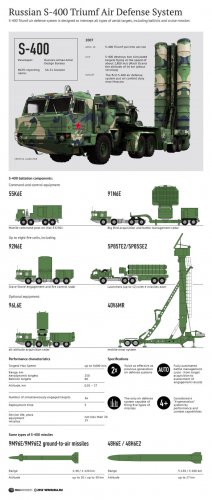airborne one,not having any problem or limit of:energy,weigh or space like those mounted on an aircraft).We talk of systems like:SPN-2/4 (capable to suppress side-looking radars,low-altitude flight control,terrain following radars and weapons control radars),SPN-30 (fundamental for its capacity to deceive "home on jam" weapons and cruise missile's in fly guidance and correction uplink )Pelena-1(designed
specifically to jam AWACS radar,in particular E-3,it render undetectable or twist the position of protected assets in a range of 70-86 km !!). All those ECM,in Soviet doctrine,would start in passive stance(working,effectively,like Emitter Locating Systems)moving very often;in this way them would function like a deadly trap; when a sufficient number of hostile aircraft would be penetrated in theirs area,all these system would go active from unknow positions,blinding them all(probably,considering the power output of the jamming signals,aircraft would have problems even at find the route for a retreat). At those systems you would add anti IR/Laser Aerosols,IR-Radar reflection attenuating camouflage nets and decoy (the efficiency of downgraded export version of which, NATO has tested in Kosovo War

nly 13 serbian tanks effectively destoyed,from an initial stime of 487 !! 2 SA-6 radars instead of 26 and 18 APCs and 20 artillery pieces instead of 86 and 520 respectively).
I am sorry for the length,but i sincerely hope to contribute,with this examination of 1980 URSS Air Defence systems to eliminate one time for all,from discussion on
modern unbelievably
more powerful russian SAMs,this ridicle "mindset" on air defense suppression deriving from the deceiving events of Gulf War. Best Regards



